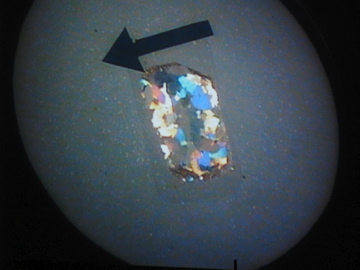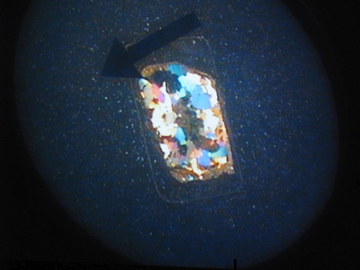|
Size: 1569
Comment:
|
Size: 2845
Comment:
|
| Deletions are marked like this. | Additions are marked like this. |
| Line 2: | Line 2: |
| ||<:30%>[[PiraScheme#Optics| Table of Optics Demonstration]]||<:30%>[[OPEquipmentList| List of Optics Equipment & Supplies]]||<:30%>[[Demonstrations|Lecture Demonstrations]]|| | ||<30% style="text-align:center">[[PiraScheme#Optics|Table of Optics Demonstration]] ||<30% style="text-align:center">[[OPEquipmentList|List of Optics Equipment & Supplies]] ||<30% style="text-align:center">[[Demonstrations|Lecture Demonstrations]] || |
| Line 5: | Line 6: |
| '''Topic and Concept:''' | |
| Line 6: | Line 8: |
| '''Topic and Concept:''' Polarization, [[Polarization#Birefringence| 6H35. Birefringence]] |
. Polarization, [[Polarization#Birefringence|6H35. Birefringence]] |
| Line 10: | Line 11: |
| Line 12: | Line 14: |
| * '''Shelf:''' #2 | * '''Shelf:''' #2 |
| Line 14: | Line 16: |
| attachment: mainPhoto | {{attachment:rfmits2.jpg}} |
| Line 18: | Line 20: |
| Insert succinct description of demonstration. | Three examples of rock-forming minerals in thin-section were kindly donated to UW Physics Lecture/Demonstration by the UW Geology Department. |
| Line 20: | Line 22: |
| ||<:style="width: 60%" :40%>'''Equipment'''||<:30%>'''Location'''||<:25%>'''ID Number'''|| | Preparation and examination of thin sections is a topic in optical mineralogy, and is typically covered in the undergraduate geology major's coursework. The thin sections are approximately 30 microns thick, and mounted on glass slides so they can be handled. ||<40% style="text-align:center">'''Equipment''' ||<30% style="text-align:center">'''Location''' ||<25% style="text-align:center">'''ID Number''' || |
| Line 22: | Line 27: |
| ||apparatus||[[MechanicsCabinetBayB1| ME, Bay B1, Shelf #2]]|| || ||all other parts||[[MechanicsCabinetBayB1| ME, Bay B1, Shelf #2]]|| || ||...||[[MechanicsCabinetBayA5| ME, Bay A5, Shelf #2]]|| || |
||Thin sections ||[[OpticsCabinetBayB5|OP, Bay B5, Shelf #2]] || || ||polariscope ||[[OpticsCabinetBayB5|OP, Bay B5, Shelf #2]] || || |
| Line 27: | Line 31: |
| '''''Important Setup Notes:''''' * ''''' ''''' |
|
| Line 31: | Line 33: |
| '''Setup and Procedure:''' | '''Setup and Procedure:''' |
| Line 33: | Line 35: |
| 1. List steps for setup then procedure. 1. ... |
Place thin section between crossed polarizers of polariscope. |
| Line 36: | Line 37: |
| '''Cautions, Warnings, or Safety Concerns:''' * |
Rotate one polarizer (or look at thin section from different vantage point) Observe the changes of the colors, which are frequently quite beautiful. || {{attachment:Image1.jpg}} || {{attachment:Image2.jpg}} || {{attachment:Image3.jpg}} || |
| Line 40: | Line 44: |
| '''Discussion:''' | |
| Line 42: | Line 45: |
| Discuss the physics behind the demonstration, explaining some of the various steps of the demonstration when appropriate. | |
| Line 44: | Line 46: |
| ||attachment: photo||attachment: photo||attachment: photo||attachment: photo|| | '''Discussion:''' The pictures above show thin section 10.1F8, one of the three sections donated to UW Physics by UW Geology. This thin section comes from one of the few rocks we have at the Earth's surface that come directly from the Earth's mantle. It was apparently ripped out place by an adjacent upwelling of magma from deeper within the Earth's interior. Note that the interior of the thin section shows large crystals, while the perimeter shows small crystals. One infers the perimeter must have melted during the rock's journey to the surface, and then suddenly cooled. The interior presumably cooled much more slowly during the original formation of the rock. |
| Line 47: | Line 55: |
| Line 51: | Line 60: |
| * List any references |
* Lecture on optical mineralogy: [[http://www.geo.arizona.edu/geo3xx/geo306_mdbarton/classonly/306%20Web%20Materials/306_Lecture041101.htm|http://www.geo.arizona.edu/geo3xx/geo306_mdbarton/classonly/306%20Web%20Materials/306_Lecture041101.htm]] |
Rock-forming Minerals in Thin Section, 6H35.54
Topic and Concept:
Polarization, 6H35. Birefringence
Location:
Cabinet: Optics (OP)
Bay: (B5)
Shelf: #2

Abstract:
Three examples of rock-forming minerals in thin-section were kindly donated to UW Physics Lecture/Demonstration by the UW Geology Department.
Preparation and examination of thin sections is a topic in optical mineralogy, and is typically covered in the undergraduate geology major's coursework.
The thin sections are approximately 30 microns thick, and mounted on glass slides so they can be handled.
Equipment |
Location |
ID Number |
|
|
|
Thin sections |
|
|
polariscope |
|
Setup and Procedure:
Place thin section between crossed polarizers of polariscope.
Rotate one polarizer (or look at thin section from different vantage point)
Observe the changes of the colors, which are frequently quite beautiful.
|
|
|
Discussion:
The pictures above show thin section 10.1F8, one of the three sections donated to UW Physics by UW Geology.
This thin section comes from one of the few rocks we have at the Earth's surface that come directly from the Earth's mantle. It was apparently ripped out place by an adjacent upwelling of magma from deeper within the Earth's interior.
Note that the interior of the thin section shows large crystals, while the perimeter shows small crystals. One infers the perimeter must have melted during the rock's journey to the surface, and then suddenly cooled. The interior presumably cooled much more slowly during the original formation of the rock.
Videos:
References:
Lecture on optical mineralogy: http://www.geo.arizona.edu/geo3xx/geo306_mdbarton/classonly/306%20Web%20Materials/306_Lecture041101.htm


